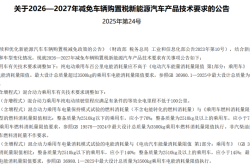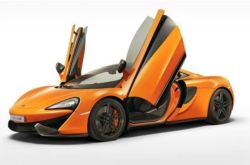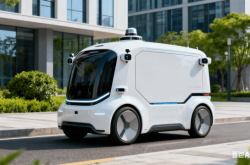Why Did Qualcomm Acquire Arduino?
![]() 10/13 2025
10/13 2025
![]() 480
480
Produced by Zhineng Zhixin
Qualcomm's announcement to acquire Arduino, the world's most influential open-source hardware company, has drawn widespread attention across the tech community.
Why is this acquisition taking place? We can delve into this question, and undoubtedly, it is closely tied to considerations for the future era of the Internet of Things (IoT) and edge AI. Qualcomm's penetration within the developer ecosystem, especially in the highly fragmented IoT landscape, has been lacking.
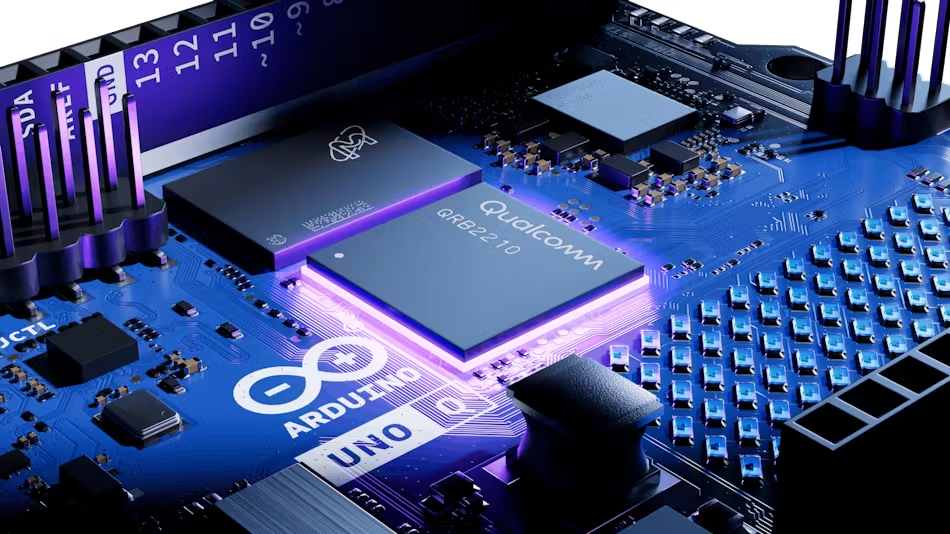
Acquiring Arduino is less about valuing its hardware and more about gaining access to the world's largest and most active hardware developer community, which boasts an ecosystem with tens of millions of users. This presents Qualcomm with the most cost-effective and efficient 'pipeline' to integrate its SoC (System-on-Chip) and edge AI technologies into a wide range of innovative projects.
For Arduino, there's also a pressing need to break free from the performance bottlenecks of traditional MCUs and secure a 'ticket' to enter the high-performance AIoT arena. Qualcomm's advanced chip technology and substantial capital are precisely the key fuels needed for this evolutionary leap.
Qualcomm can position Arduino as its 'official Novice Village (rookie village)' for IoT chips and a de facto reference design platform. This move will lower development barriers and ultimately pave the way for Qualcomm in the AI + IoT landscape. Arduino, in turn, can transition from a 'maker Enlightenment tool (maker enlightenment tool)' to a 'professional-grade AIoT development platform,' thereby enhancing its value in industrial and commercial applications.
Part 1
The Roots and Wings of Open Source: Arduino's Community Value
The Arduino story began in a laboratory at the Ivrea Design Institute in Italy in 2005. Several students, along with their mentor Massimo Banzi, developed a simple development board based on the ATmega8 chip to meet the need for interactive design teaching tools.
Of course, the board's low cost, open-source code, and publicly available documentation quickly transformed it from a mere teaching aid into one of the world's most influential open-source hardware platforms.
Arduino's success stems from lowering the barriers to 'creation.' Its core contributions include:
◎ Taking hardware out of the 'exclusive domain of engineers' and putting it into the hands of ordinary makers and students;
◎ Providing a complete 'software-hardware integrated' development experience, from the Integrated Development Environment (IDE) to libraries, and then to onboard firmware;
◎ Safeguarding the rights to freely copy and recreate under licenses such as GPL, LGPL, and CC BY-SA.
Its completely open stance has made Arduino the 'first board' for countless individuals to engage in embedded development. Arduino's development boards sell over 10 million units annually, with an active user base exceeding 30 million, and related open-source projects surpassing 1 billion. This symbolizes that 'anyone can bring their ideas to life.'
Of course, the open-source ecosystem isn't without its flaws. With the rise of IoT, AIoT, and smart hardware, Arduino faces challenges related to inadequate performance and fragmentation.
Classic products like UNO and Nano still rely on 8-bit MCUs, which seem outdated compared to today's mainstream multi-core and AI-accelerated architectures.
Although Arduino has attempted to introduce new versions like UNO R4, its performance and ecological appeal have waned. As the maker education market becomes saturated, Arduino's growth momentum slows.
How to maintain influence has become an unavoidable question for the company. Against this backdrop, Qualcomm's acquisition is clearly not a 'whim' but rather a strategic recombination of technological ecosystems.
Part 2
Qualcomm's Purpose: An Ecosystem Co-builder
Qualcomm recognizes that Arduino has established a thriving maker and developer ecosystem. Leveraging its strong patent portfolio and influence over communication standards, Qualcomm has dominated the smartphone era.
However, as the smartphone market reaches saturation, growth opportunities are shifting toward IoT, edge AI, and embedded intelligent systems. These emerging fields are highly fragmented, featuring diverse device forms, complex software ecosystems, and varied application demands.
The traditional chip + SDK model struggles to scale rapidly. On the other hand, Arduino possesses natural advantages in 'rapid prototyping' and 'developer communities.' The acquisition can be seen as an accelerator for Qualcomm's IoT strategy.
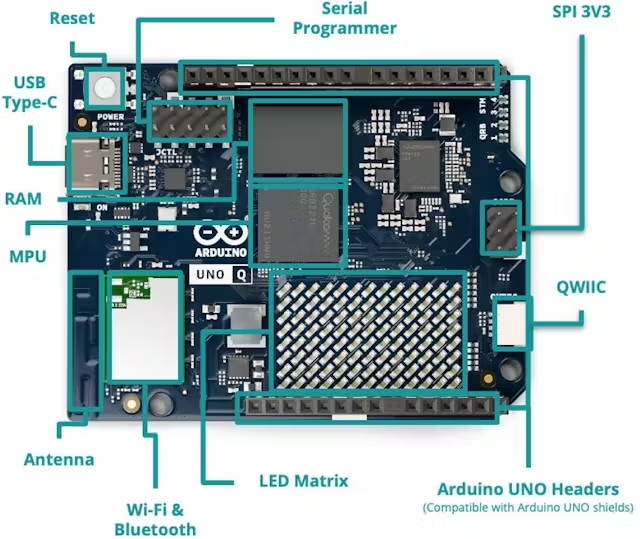
After the acquisition, the two parties jointly launched their first development board, the Arduino UNO Q, which integrates the technological strengths of Qualcomm and Arduino:
◎ The main processor adopts Qualcomm's Yuelong QRB2210, featuring a quad-core A53@2.0GHz architecture and 11nm process;
◎ The auxiliary MCU is STM32U585 for real-time control;
◎ It comes with onboard Wi-Fi 5, Bluetooth 5.1 modules, and complete support for Internet Service Providers (ISPs) and Graphics Processing Units (GPUs);
◎ Equipped with a new IDE, Arduino App Lab, enabling mixed Python and Arduino programming directly on Debian systems.
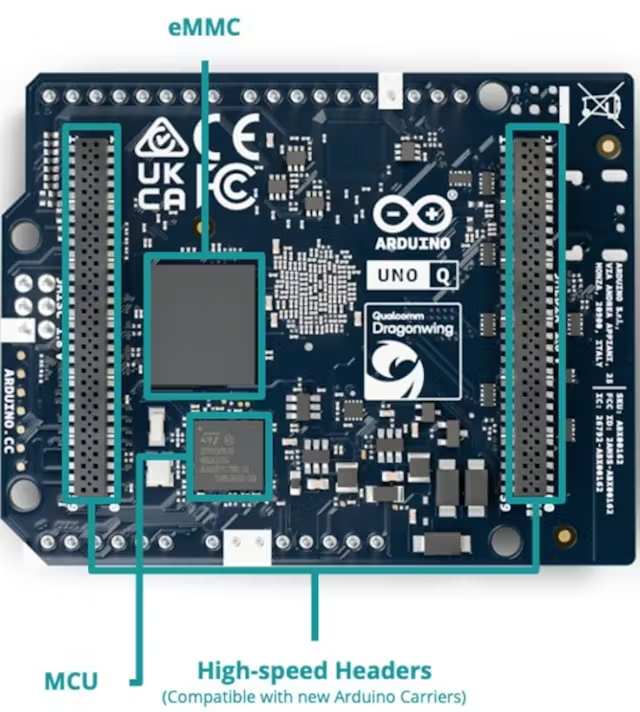
Arduino officially enters the Linux SBC (Single Board Computer) and AI development board arena, directly competing with Raspberry Pi. The UNO Q not only runs traditional Arduino projects but also supports the Edge Impulse platform for AI tasks such as machine vision, speech recognition, and anomaly detection.
Qualcomm's logic is clear: expand ecological boundaries, unify development interfaces, and enhance soft power.
◎ Leverage Arduino's community foundation to naturally embed its chips in educational, maker, and lightweight AIoT markets;
◎ Integrate Python, Real-Time Operating Systems (RTOS), and Linux environments through Arduino App Lab, lowering development barriers and enabling more non-professional developers to access Qualcomm's platform;
◎ In the edge AI computing race, differentiate itself ecologically from competitors like NVIDIA, MediaTek, and Espressif.
Previously constrained by the performance of 8-bit and 32-bit MCUs, Arduino now gains access to Qualcomm's powerful CPU, GPU, and AI acceleration capabilities. The emergence of UNO Q also brings Arduino back to the center of discussions on performance and innovation.
When an open-source project is acquired by a commercial giant, a pertinent question arises: will freedom be diminished?
Arduino's long-standing prosperity stems from treating developers not as 'users' but as 'co-builders.' However, Qualcomm's corporate culture is starkly different—known for patent licensing, ecological closure, and even dubbed a 'patent troll' by some in the industry.
Both parties emphasize in their statements that 'Arduino will retain its independent brand and open-source mission,' but historical experience tells us that commercial integration often leads to ecological convergence.
Will product updates remain deeply tied to Qualcomm chips, continuing to support chips from other vendors (such as Espressif, ST, or Microchip)?
As the underlying layers of IDEs, libraries, and drivers become increasingly dependent on Qualcomm's SDK, will the community retain the freedom to fork or modify?
The answers to these questions will determine whether Arduino continues as a 'flagbearer of open-source hardware' or becomes merely an entry point into Qualcomm's ecosystem.
Qualcomm is indeed undergoing a transformation. From launching the 'Yuelong Platform' to participating in the RISC-V Alliance, it is gradually transitioning toward openness.
Acquiring companies like Arduino, Edge Impulse, and Foundries.io can be seen as attempts to 'build an open development ecosystem.'
Arduino can leverage Qualcomm's resources to achieve technological leaps, while Qualcomm gains developer trust through the open-source ecosystem, achieving 'mutual empowerment.'
The market feedback on UNO Q will serve as a bellwether: if it genuinely lowers barriers in education and AIoT development while maintaining open-source compatibility, this acquisition will be deemed a 'win-win.'
Conclusion
For engineers, the arrival of UNO Q undoubtedly represents an opportunity. It may blur and broaden the boundaries between AIoT, embedded AI, and maker education. For the entire industry, this acquisition is an experiment in 'ecosystems': whether commercial and open-source endeavors can cease to be adversarial and instead mutually reinforce each other.


